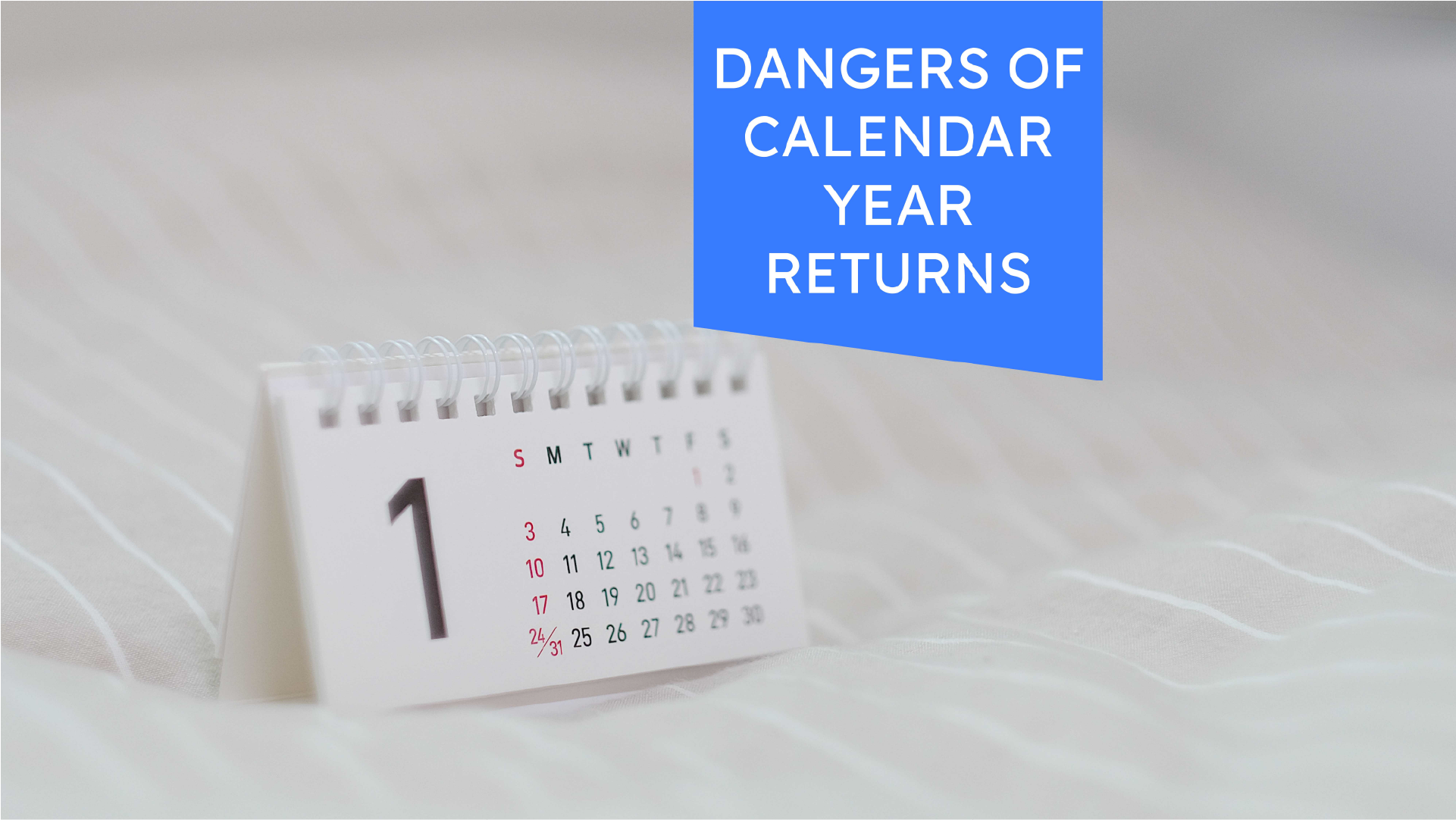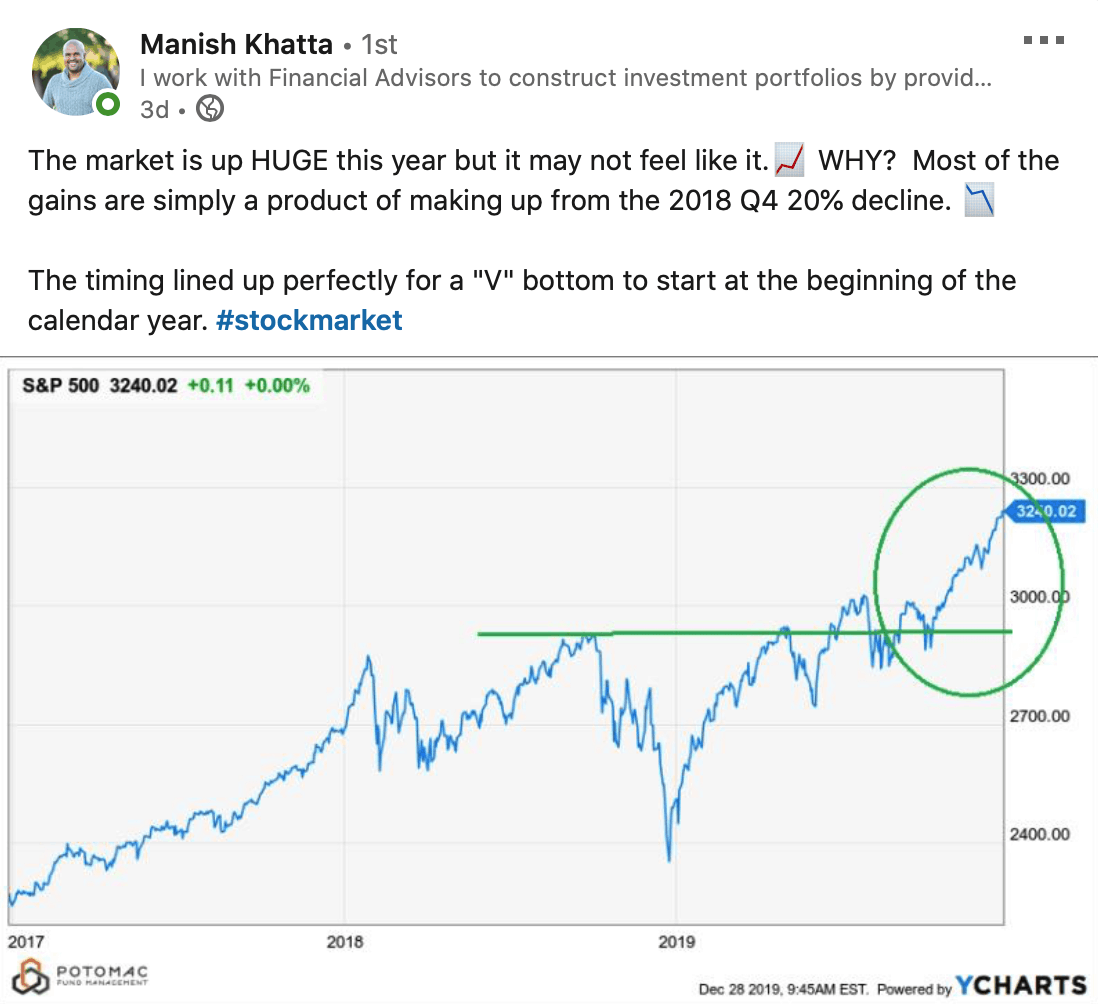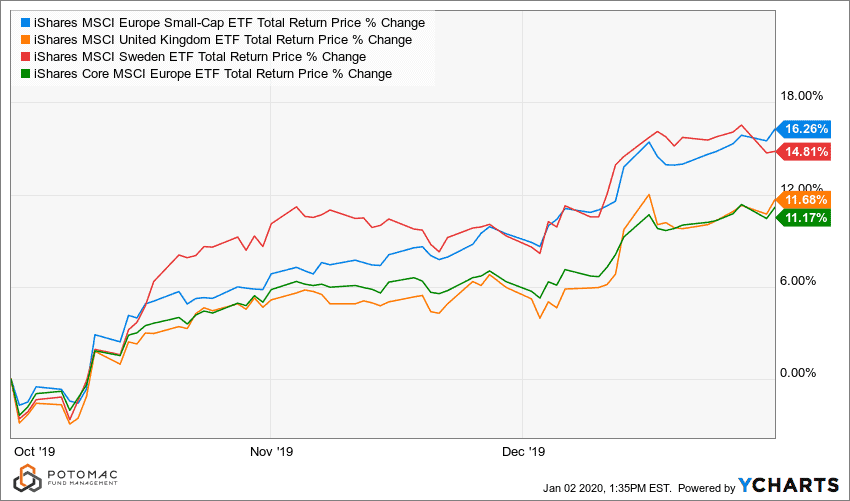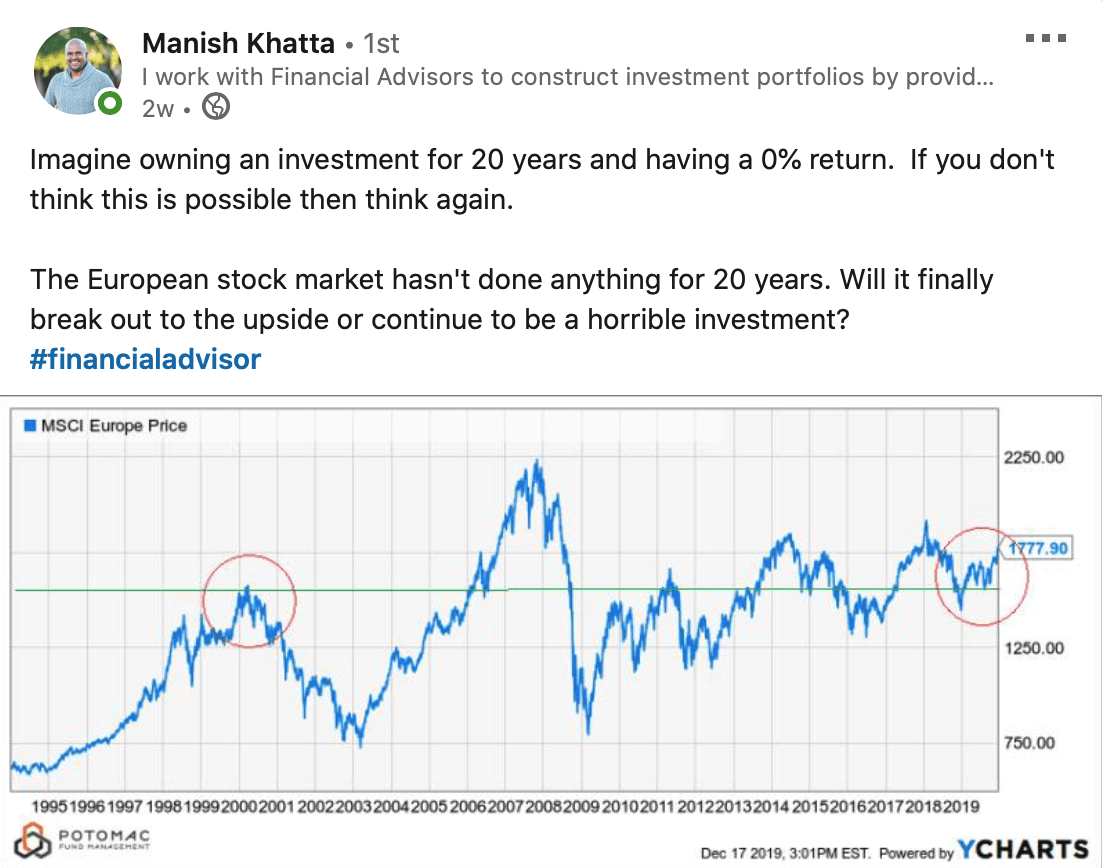
I talk to a lot of financial advisors.
Normally the conversations are about their business and how Potomac manages money. The typical questions revolve around our risk reduction techniques, asset allocation, track record and our overall investment philosophy.
We work with a lot of smart advisors who ask a ton of probing questions.
There is one line of questioning from prospective advisors that makes me cringe.
-How are you doing YTD?
-How was your performance last year?
Now hear me out.
Of course, when looking at any investment you want to get the entire picture. However, when the lead in question is entirely about short term performance it’s a major red flag that the relationship will likely fail long term.
If a performance track record and a client’s plan spans decades, short term performance is meaningless especially when short term performance can be so deceiving.
Calendar Year Returns
On our fact sheets we report calendar year returns and I wish we didn’t. I know it’s the norm for our industry, but it rarely is something that is in the client’s best interest. Investors live their lives dynamically with different cash flows and starting positions. In a previous post, we talked about how much starting positions matter.
Side Note: In terms of behavioral investor mistakes, my two biggest pet peeves are calendar year returns and the improper use of benchmarks.
The current market environment is a perfect example of how the short termism of calendar year returns can be misleading.
Assuming the S&P 500 TR is your market proxy of choice, let’s look at the last two calendar year performance numbers.
2018: -4.38%
2019: +31.49%
Yes, the market is up almost 32% on a calendar year basis but… ???

The total return from 09/30/2018 (around the beginning of correction) to 12/31/2019 is 13.71%. Zoom out even more and the 2 year annualized performance is 12.12%
Now a 12% annualized return is phenomenal performance and a better way to look at returns than focusing on the one big year.
When in Doubt, Zoom Out!
This is one of my favorite investment sayings because it helps to keep things in perspective.
It’s easy to get caught up in short term performance but it’s best to take a step back to get the whole picture.
Case in point – European equities. Since the end of the third quarter European ETF’s have been some of the best international performers in some cases doubling the performance of major US based indices.

Maybe this is true but “when in doubt, zoom out” and you see a market that has essentially returned 0% over a 20 year period.

What’s Your Point?
Short term performance is meaningless and calendar year returns can be the leading cause of FOMO.
It’s important for investors to focus on their plan laid out by their financial advisor. If your long term financial plan calls for an 8% annualized return to meet your goals, then that is your goal post. Not the benchmark and not your neighbor’s portfolio.
Happy Investing.
